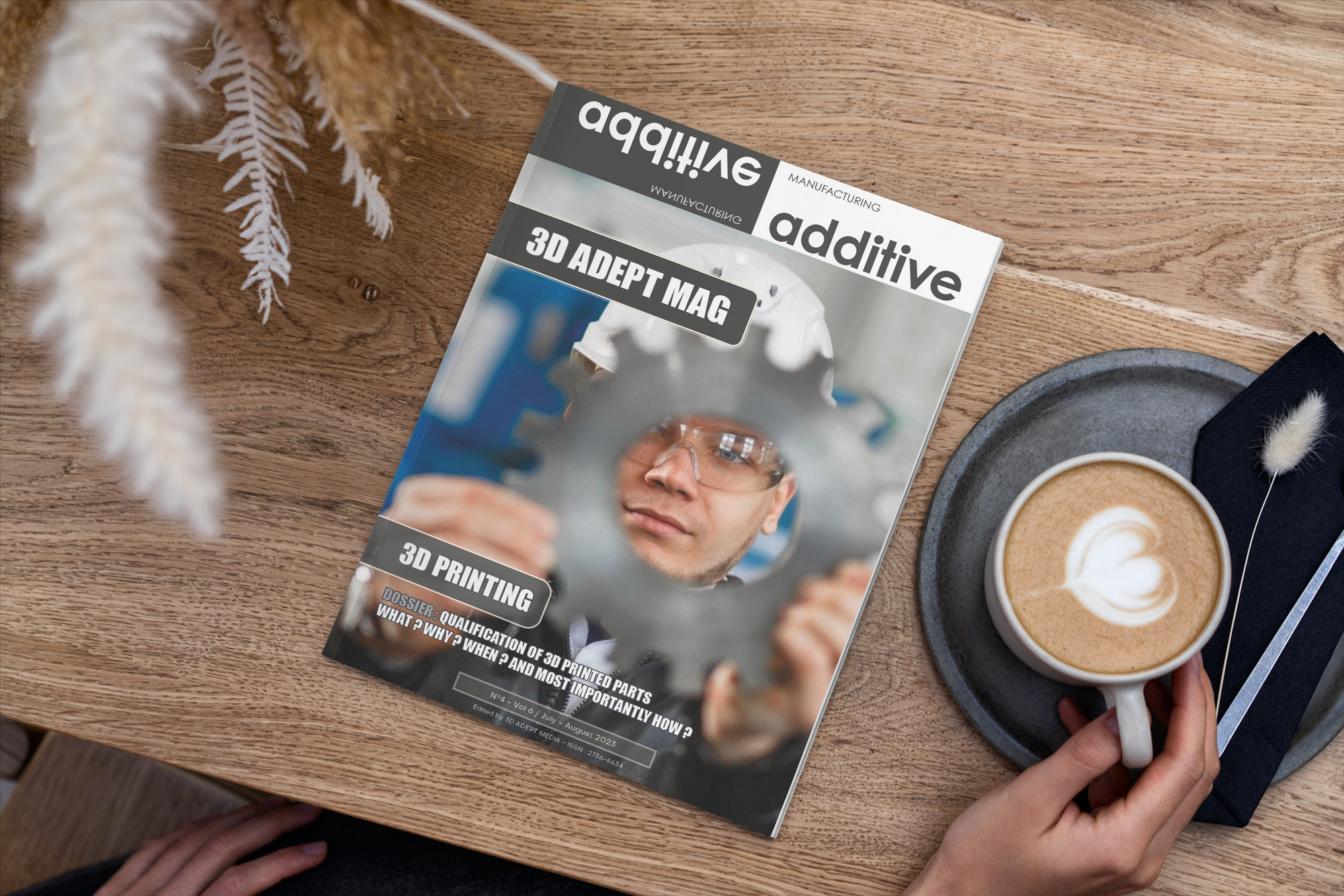[std alias=”Download the 2023 July/August edition of 3D ADEPT Mag”]
Download the 2023 July/August edition of 3D ADEPT Mag
Download the July/August edition of 3D ADEPT Mag
Since AM is already described as “the most overhyped technology”, there is a need to lay out the facts and to be transparent about the impact of those non-AM/3DP frontier solutions without enthusing. In this summer edition of 3D ADEPT Mag, we have identified a couple of topics that are already making strides across the software, materials and applications segments. These topics may not necessarily be “new” as they aim to shed light on complexities one does not necessarily take into account when exploring AM, and lessons that can only result from holistic experiences of the technology. Beyond these applications and technology solutions that impact the AM industry itself, this edition of 3D ADEPT Mag also brings to the table a timeless and complex topic: part qualification. Chosen by our community, the topic is not a new one at 3D Adept media, but as AM is entering a maturation stage, there is a need to document and characterize qualification efforts, (to attempt) to provide a framework that could really help industries, so that you can plan tomorrow, today.
Exclusive features
Dossier
Qualification of 3D printed parts: What? Why? When? And most importantly how?
Once per year, we sit down to assess some of the key insights we collected from our conversations with OEMs using AM and from (potential) users of the technology at trade shows we visited. Doing that enables us to determine issues or solutions that are common to industries. One thing we learned from last year’s insights is that the need to qualify and certify 3D printed parts remains a barrier to more extensive use of AM across platforms. TBGA’s John Barnes and Jabil’s Chuck Nostedt shared their insights here.
Applications
How can CFD make a difference in an Additive Manufacturing production?
Any engineer designing a product must validate their decisions based on collected evidence, that’s a fact. Sometimes, a specific consideration such as the economic, performance or aesthetic reason often weighs heavily in the balance. To ensure that decision is accurate and time efficient, the engineer has to rely on a number of software solutions such as Computation Fluid Dynamics (CFD). Understanding the unicity of CFD is the goal of this article. With contributions from Gabrian Balelang from Conflux Technology & Marcin Serdeczny from Flow Science.
Events
Danish AM Hub & Space Tech Expo
With the “back-to-school” season around the corner, we start reflecting on the AM trade shows that could be interesting to visit. AM Summit, the largest AM conference in Scandinavia and Space Tech Expo are in our list.
Post-processing
Key considerations to take into account for depowdering of plastic 3D printed parts.
Among the post-processing tasks that have often been considered modest priorities by OEMs, there is depowdering. The thing is, a lot of consideration has always been given to depowdering of metal 3D printed parts, letting vertical industries adopting Additive Manufacturing (AM) with little information on how to properly handle this process with plastic 3D printed parts. The article below ambitions to change that by discussing 4 key considerations to take into account for this specific post-processing task. To do so, we have given the floor to Andreas Hartman, founder and CEO/CTO of Solukon and Philipp Kramer, CTO & Co-founder of DyeMansion.
Interview of the Month
The use of Fluid Management Systems in Additive Manufacturing
In a recent Additive Talks session, one learned the importance of thermal/fluid system designs to enhance speed, and performance in electrification. A few weeks later, Megnajet, a fluid management system expert, appeared on our radar with a new fluid management system designed for AM. This raised so many questions on the use of fluid management systems in Additive Manufacturing that we have decided to ask Mike Seal, Megnajet General Manager.
Opinion
The power of hype: Marketing lessons from 3D printing
Advertising may not be the first sector that comes to one’s mind when it comes to leveraging AM but there are a few similarities with the technology.
Education
SAM Project: The team reflects on their initiatives after 5 years of activity and their legacy for the AM industry
The Sector Skills Strategy for Additive Manufacturing project aka SAM funded by Erasmus+, is coming to an end after five years of activity. The project aimed to implement an actionable plan to train and drive more people to experience a career within the additive manufacturing industry. 3D ADEPT Media took part in this project as a SAM Associated Partner. In the article below, the team reflects on their initiatives and their legacy for the AM industry.



